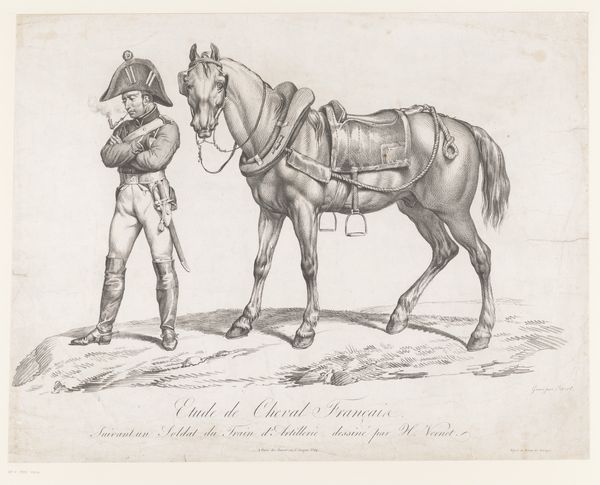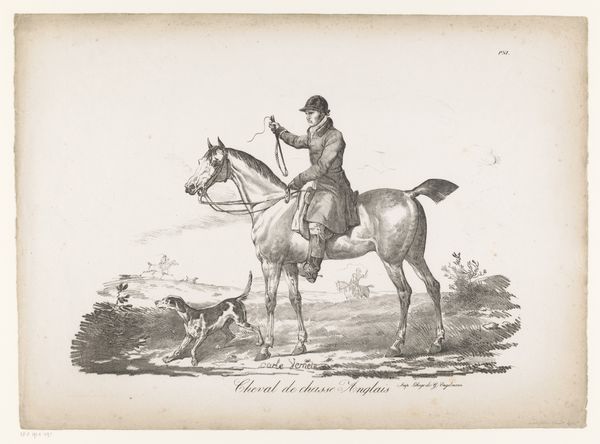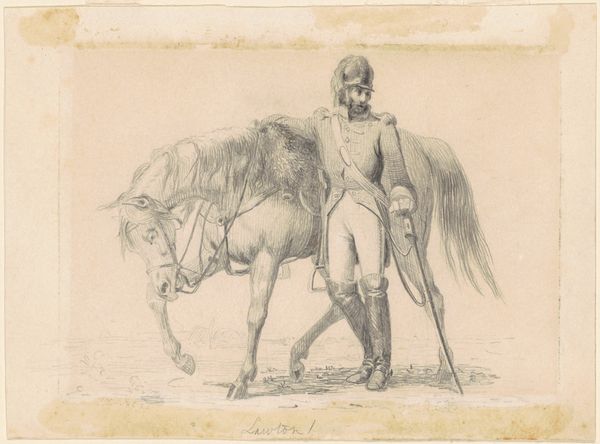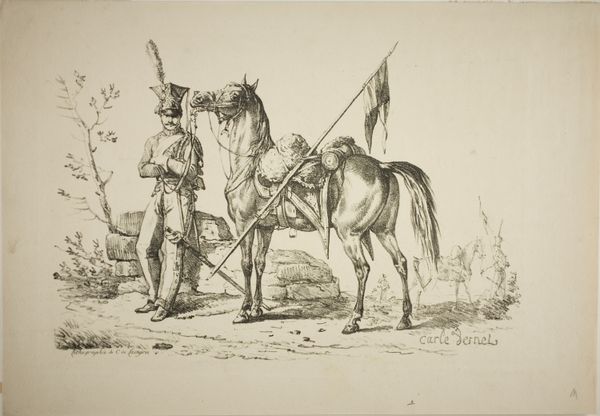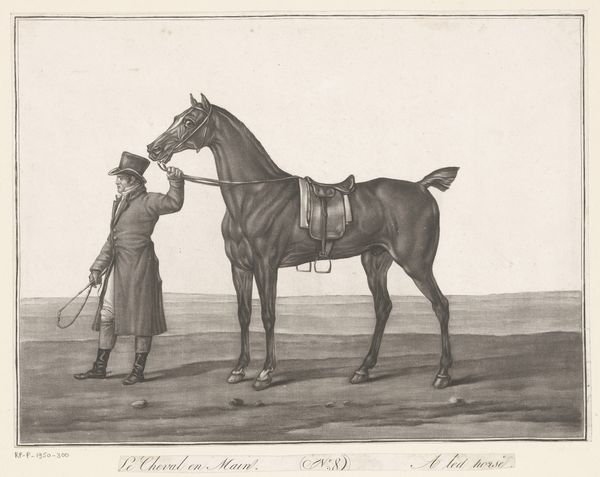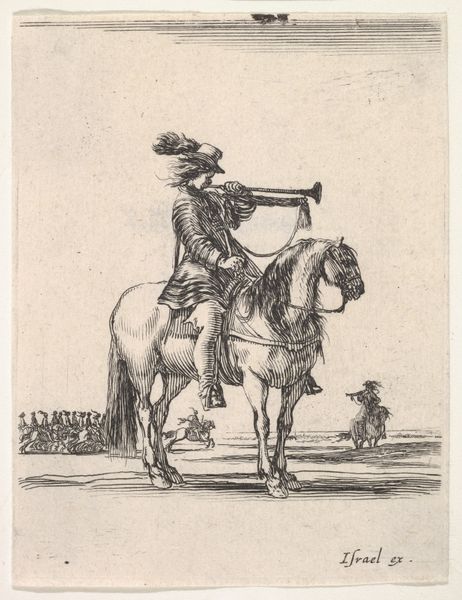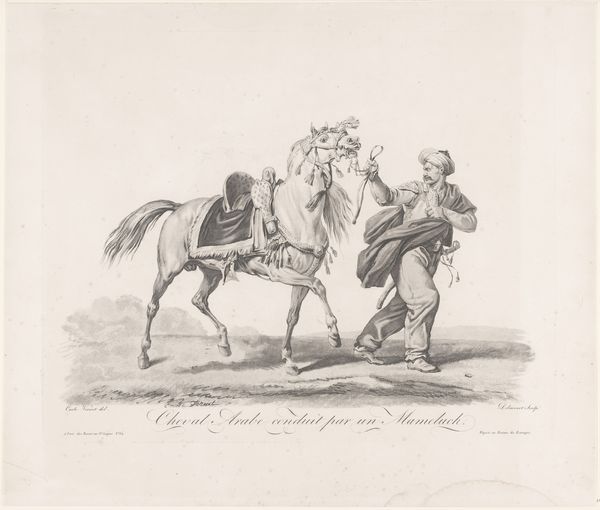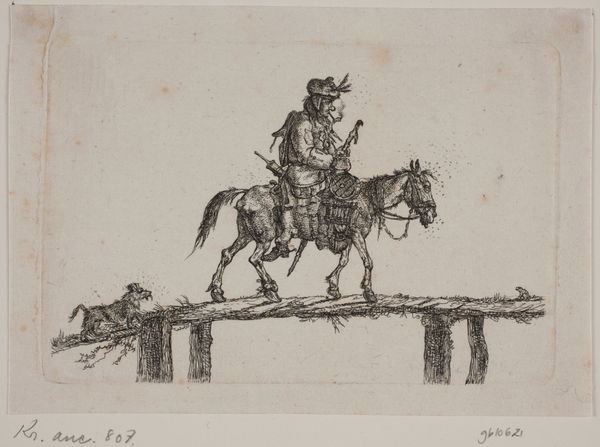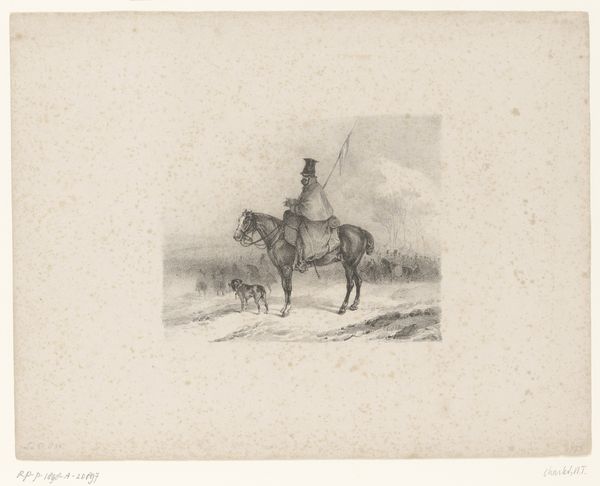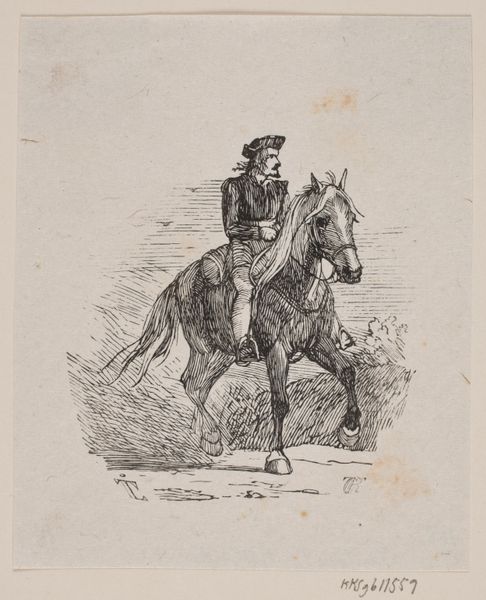
#
imaginative character sketch
#
light pencil work
#
quirky sketch
#
pencil sketch
#
personal sketchbook
#
horse
#
sketchbook drawing
#
pencil work
#
watercolour illustration
#
sketchbook art
#
fantasy sketch
Dimensions: height 463 mm, width 515 mm
Copyright: Rijks Museum: Open Domain
Curator: Look at this delicate piece by Jean Pierre Marie Jazet, dating roughly from 1799 to 1871. It's called "Soldaat in Rusissche klederdracht bij zijn paard", currently held here at the Rijksmuseum. Editor: There's a captivating stillness to this work, almost dreamlike. The subtle use of line creates such a softness in the horse’s form, and the detail in the soldier’s clothing. What was Jazet aiming for here? Curator: Jazet was clearly interested in depicting material culture, notice the meticulous rendering of the soldier's armor, the specific design of the horse's saddle. There’s real attention paid to representing Russian dress and equipment, documenting ethnographic details through his artistry. Editor: Precisely. It speaks to the time, doesn’t it? The European fascination with exotic cultures and the growing accessibility of travel. How do you think these kinds of depictions impacted the general public's perception of other nations at the time? Was it purely observation, or was there some ideological slant? Curator: Hard to say, but clearly a hand-drawn study like this provides a sense of ‘authenticity.’ He’s inviting us to look at the texture of the clothing, the crafting of each item of gear – pointing to the labour involved, to its social construction. The image carries authority from that material perspective. Editor: Authority perhaps, but also perpetuating certain perspectives. Is this image serving a role in a broader political landscape by reinforcing stereotypes or exoticizing this figure and his horse? How does this individual soldier function within the wider visual economy of 19th-century imperial projects? Curator: A valid question. Perhaps the artist hoped simply to capture something unique? Nevertheless, the political ramifications of representing 'the other' can't be discounted in the cultural milieu of the time. Editor: Indeed. Considering the work in the context of display within the Rijksmuseum as well…it asks even bigger questions. I see so much layered complexity packed within this seemingly straightforward scene. Curator: It reminds me how art constantly intertwines tangible representation with historical context to create new understandings of material life. Editor: Agreed. Every object, every image has the potential to re-write the script!
Comments
No comments
Be the first to comment and join the conversation on the ultimate creative platform.
